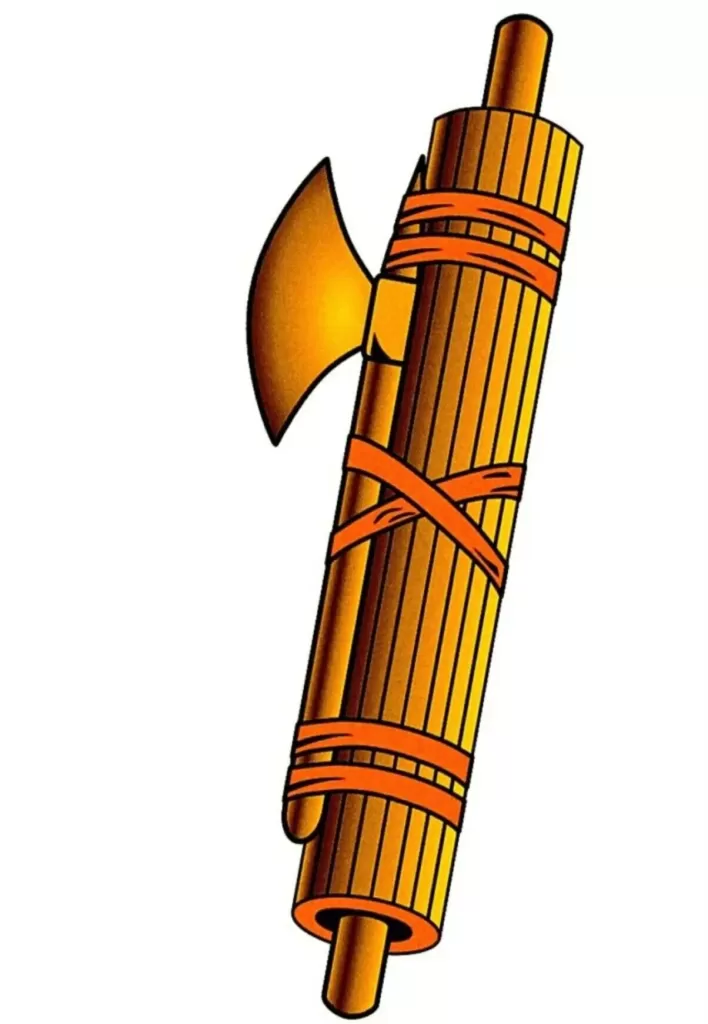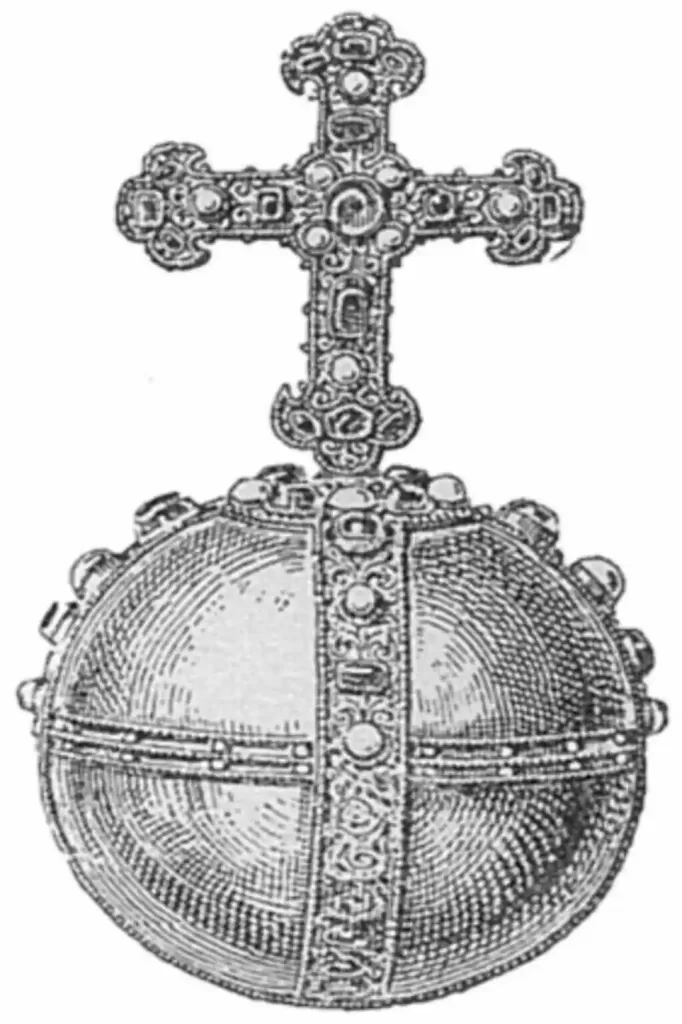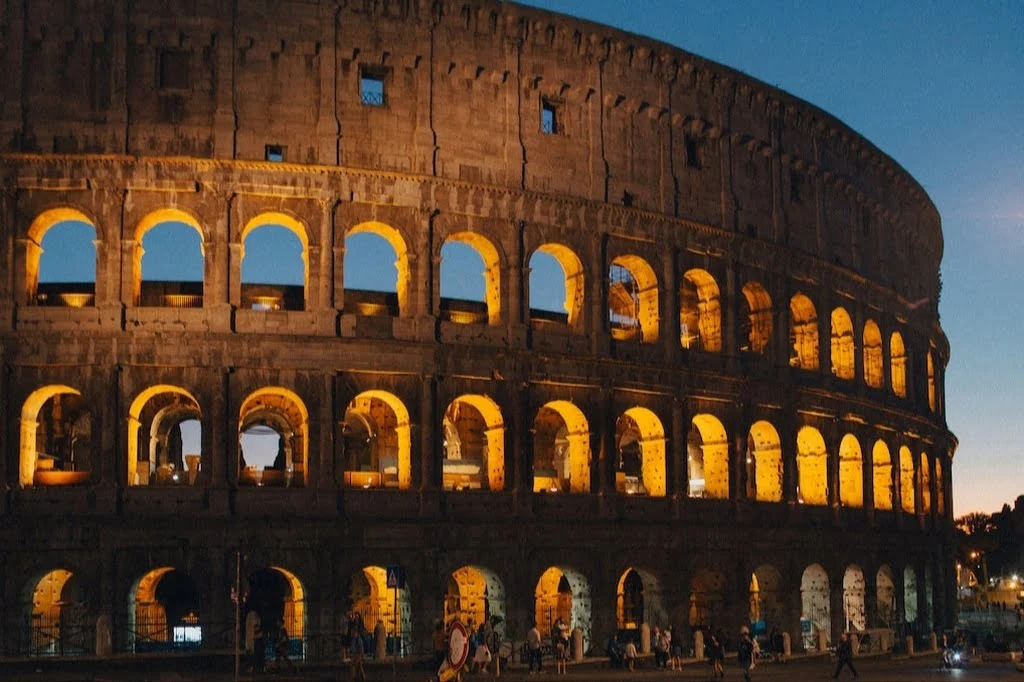Do you want to know some of the most well-known symbols of Rome?
Rome, being older than Italy itself, has been rich in symbolism since ancient times. From the aquila (eagle) to the she-wolf nursing the city’s twin founders and the bundle of axe and wooden rods that symbolized power and authority among the Romans, these symbols of Rome are an important part of Italian history and culture, and they are still very much seen today.

10 Most Famous Symbols of Rome
Let’s have a quick look at 10 of the most famous ancient Roman symbols and what they mean.
1. Aquila (Eagle)

© Marcomogollon | Wikimedia Commons
For ancient Romans, the eagle was the king of birds. The eagle, known as the aquila, was the symbol of their imperial power, thus representing courage and strength, as well as immortality. This is one of the most important Italian symbols.
The aquila was also used as the symbol of the Roman military. Roman legions chose animal symbols to represent their spirit.
It was the Roman general and statesman Gaius Marius who, in 102 B.C., decided that the aquila alone should become the defining symbol of Roman power. They picked the eagle to symbolize the Roman Empire and to become the military standard because they determined that the aquila represented what their culture and military treasured.
Individual legions were so protective of their standards that they designed a position for the sole purpose of watching over the aquila and carrying it into battle. A legionary carrying the eagle standard was known as an aquilifer, or the “eagle-bearer.” Each legion had one aquilifier that carried an eagle.
The aquila remains one of the most well-known ancient Roman symbols that we still see today. It is a common representation of Roman strength, valor, and triumph. Some current military groups and organizations retain its use as a tribute to the Roman Empire’s long and illustrious history.
2. Lupa (She-wolf)

© Wolpertinger | Wikimedia Commons
The she-wolf called Lupa is a very important figure in Roman history and culture. Legend says that Lupa found the orphaned twin infants Romulus and Remus, future founders of Rome, and nursed them in her lair in Palatine Hill.
A very popular and much revered image during the ancient Roman times, the lupa or she-wolf represented Roman power just like the aquila. It was and still is the iconic symbol of Rome, and also one of the most important Italian symbols. It is famously represented by the bronze sculpture known as the Capitoline Wolf.
The Lupa Capitolina (Capitoline Wolf) was created by Renaissance painter, sculptor, and engraver Antonio del Pollaiuolo, and has been in the Palazzo dei Conservatori in Rome since 1471.
3. Fasces

Fasces is a bundle of wooden sticks or rods and an axe with its blade on view tied together by leather thongs. Taken from the Italian word fascio (plural: fasci), which literally means “a sheaf” or “a bundle,” figuratively fasces means “league.”
The fasces is an Italian symbol with origin that can be traced back to the Etruscan civilization (from the 8th century BCE to the 3rd and 2nd centuries BCE). This was confirmed by the miniature iron set of fasces unearthed from a 7th-century BCE Etruscan tomb at Vetulonia in the province of Grosseto in Tuscany. The fasces symbol was inherited by ancient Rome, where it represented the power, imperium, or jurisdiction of a magistrate.
The fasces was a portable kit Roman lictors used for flogging and decapitation. Roman lictors were the ones who arrested and punished people. They also served as bodyguards for the men in power. The sticks or rods were used by lictors in lashing people, and the ax in execute them. Hence, Roman leaders employed the fasces as their symbol of authority and power.
This ancient Roman symbol is the name giver of the form of government called Fascism. Being the primary symbol of Italian Fascism, the fasces symbol carries with it some strong negative connotations, so one must be careful when using it.
• Like this article? Then also read 13 Most Popular Symbols of Good Luck in Italy!
4. Globus (Globe)

The globus symbolized the ultimate power of rulers and gods over all the dominions of the Roman Empire.
The globus was commonly featured on Roman coins where Roman rulers and gods, such as Jupiter and other deities, were seen holding the globe symbol or stepping over it. This symbol served as a reminder that all the subjects of the Roman empire were within the empire’s reach no matter the distance.
Although the globus originated in ancient Rome, today it is viewed as a symbol of absolute power of the rulers over the world.
5. Laurel Wreath

Romans so admired the Greek culture that they took myriad ideas from the ancient Greek mythology. The wearing of laurel wreath is one of them.
The Greek god Apollo is often depicted as wearing it on his head. In ancient Rome, laurel wreaths signified triumph.
Julius Caesar and other Roman emperors wore laurel wreaths on their heads to show their importance and godly status. Ancient Romans wore laurels to celebrate their military victory.
Laurels were also among the top Italian symbols. These were also worn at the Olympic Games as a symbol of victory and honor. They were given to victors in poetic competitions as well, hence the term “poet laureate” which signifies a poet honored for his/her achievement.
6. Draco (Roman Dragon)

The draco, which means “dragon” or “serpent,” was a military standard of the Roman cavalry. It was the standard of the cohort, whereas the aquila (eagle) was the legion’s. The draco was worn by a horseman called the draconarius (“dragon-bearer”), while the bearer of the aquila was called was an aquilifier.
Ancient Romans loved the dragons so much that every home in ancient Rome was full of the imagery of these kindly beasts in their altars for genii loci (singular: genius loci), or the spirits protecting the place. In classical Roman religion, a genius loci was commonly depicted as a figure holding a cornucopia, patera, or dragon/serpent.
The draco or the Roman dragon was often depicted as having a feisty personality and with a warrior’s dignity and nobility. Roman cohorts and cavalry wings adopted the dragon head insignia. It served as a military banner, carried on a pole with a windsock by the draconarii in battle. The draco emitted a serpent-like hiss as it swung.
Created to distinguish Roman cavalry units, the draco symbol denotes honor. During cavalry parades, the Roman draco was made extra-colorful as an added spectacle.
• Looking for more Italian symbols? Read about the 13 Most Important Italian Emblems and Symbols!
7. Roman Toga

The Roman toga was a characteristic loose, draped outer garment worn by men who were citizens of Rome. It consisted of a single wool cloth cut in a semicircle and wrapped around the wearer’s body, and had no fastenings.
The toga was adopted from the Etruscans – from their garment called the “tebenna” – and originally worn by both men and women. It was gradually abandoned by women, and then by the laborers, until only the patricians wore them. It subsequently became a clear signifier of status in ancient Rome.
As the symbol of Roman citizenship, only free male Roman citizens sixteen years old and up could wear the toga from the beginning and through the end of the Roman Republic (509 BCE – 27 BCE). It was the required clothing for official activities back then.
8. SPQR

One of the most prominent Rome symbols, SQPR is the acronym of the emblematic abbreviated phrase “Senātus Populusque Rōmānus.” It means “The Senate and the People of Rome,” which became the motto of Imperial Rome.
SQPR refers to the government of the ancient Roman Republic, appearing on Roman coins, public documents, and monuments. It is still used today in the municipal coat of arms of Rome and for the city’s comune in official documents.
Many people still think of the SPQR sign when they hear the words “ancient Rome.” The city of Rome itself has accepted it as a symbol of Rome’s heritage and history. It’s a constant reminder of Rome’s former glory and an essential piece of Roman history and legacy.
9. Roman Numerals

Ancient Romans developed a system of numerals that became standard across the Roman Empire. Each letter in the Latin alphabet has a corresponding number value in this system.
I (1), V (5), X (10), L (50), C (100), D (500), and M (1,000) are the most common Roman numeral symbols. The rules for combining these symbols to form greater numerals are straightforward.
Roman numerals are a reflection of the ancient Romans’ level of mathematical understanding. The Roman Empire used the system extensively for commercial, taxation, and record-keeping purposes.
10. Colosseum

The ancient Roman symbol of the Colosseum, sometimes called the Flavian Amphitheatre, stands as a testament to the might and splendor of the Roman Empire. It is one of the world’s most famous landmarks, a huge elliptical amphitheater in the heart of Rome.
The Colosseum was constructed by the Flavian dynasty in the first century AD to host public performances and gladiatorial combat.
The Colosseum is a symbol of the grandeur and strength of the Roman Empire. It’s a symbol of the ancient Romans’ ability to design and build monumental public works for both utilitarian and aesthetic ends, and a testament to their mastery of engineering and architecture.
And with its association with gladiatorial contests and other violent events, the Colosseum has also come to symbolize the brutality and cruelty of ancient Rome.
ALSO READ: • 20 Fun Facts About the Colosseum in Rome That You Probably Didn’t Know
Final Thoughts
From authority and power to optimism and love, intelligence, and triumph, the emblems of Ancient Rome reflect a wide spectrum of concepts and beliefs. Each of these ancient Roman symbols reveals something about ancient Roman society and culture, shedding light on its values and aspirations.

